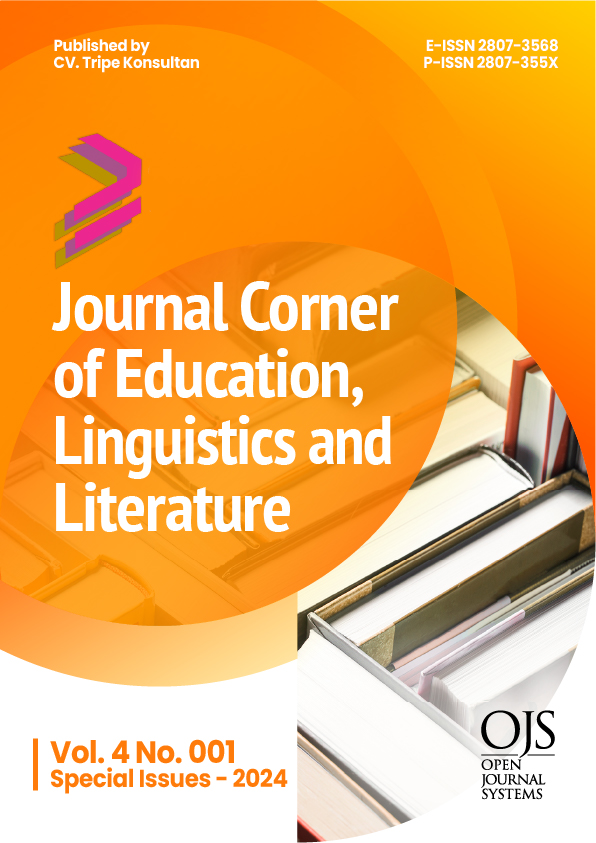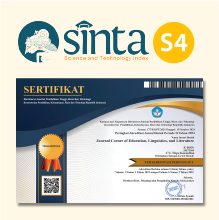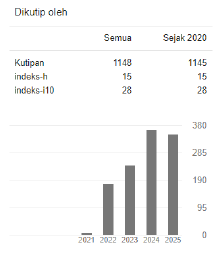The Role of Family in Preventing Bullying
 https://doi.org/10.54012/jcell.v4i001.380
https://doi.org/10.54012/jcell.v4i001.380
 Abstract views: 331
Abstract views: 331
 PDF downloads: 318
PDF downloads: 318
Keywords:
Bullying, Bullying Prevention, Behavior, Family RoleAbstract
Bullying is a form of violence intended to harm someone, carried out deliberately and repeatedly by an individual or group with more power over an individual or group that is weaker. The family plays a very important role in preventing bullying behavior. This article aims to explain the role of the family in preventing bullying in order to create an environment that supports the growth and development of children free from bullying behavior. This research uses a qualitative approach with a type of library research. The data sources in this study are secondary data obtained by collecting national and international journals. The data collection technique in this research involves a literature review process by stating the research objectives and then searching for journals relevant to the research objectives. The research results show that a family's understanding of bullying, the formation of values, positive parenting patterns, good role models and a conducive environment can prevent children from becoming victims or perpetrators of bullying. Bullying is an unlawful act. Many countries have passed laws prohibiting all forms of bullying, both in schools and in the workplace. This shows that bullying is not only considered a moral problem, but also a legal violation that must be prosecuted. Bullying is a negative behavior because of its destructive impact on the victim. The family plays a very important role in preventing bullying behavior. Several factors can prevent bullying, namely the family's understanding of bullying, the formation of positive values, positive parenting patterns, good role models, and a conducive environment. In other words, a family environment that supports and provides appropriate education can prevent children from becoming victims or perpetrators of bullying.
Downloads
References
Adlini, M. N., Dinda, A. H., Yulinda, S., Chotimah, O., & Merliyana, S. J. (2022). Metode penelitian kualitatif studi pustaka. Jurnal Edumaspul, 6(1), 974–980.
Astarani, K., & Taviyanda, D. (2020). Optimalisasi Tugas Keluarga Dalam Mencegah dan Mengatasi Perilaku Bullying Dalam Kehidupan Anak. Journal of Community Engagement in Health, 3(1), 39–43.
Burger, C. (2022). Humor styles, bullying victimization and psychological school adjustment: Mediation, moderation and person-oriented analyses. International Journal of Environmental Research and Public Health, 19(18), 11415.
Dewi, C., & Susilawati, L. (2022). Kajian Fenomenologi Tentang Makna Bullying Dan Pencapaian Posttraumatic Growth Pada Mahasiswa Penyintas Bullying Di Bali. Jurnal Psikologi Konseling, 20(1), 1369–1382.
Diannita, A., Salsabela, F., Wijiati, L., & Putri, A. M. S. (2023). Pengaruh Bullying terhadap Pelajar pada Tingkat Sekolah Menengah Pertama. Journal of Education Research, 4(1), 297–301.
Fathiyah, F. (2019). Peran Komunikasi Keluarga dalam Mencegah Perilaku Bulliying Remaja. Al-Mutsla, 1(2), 105–117.
Febriyani, Y. A., & Indrawati, E. S. (2016). Konformitas teman sebaya dan perilaku bullying pada siswa kelas XI IPS. Jurnal Empati, 5(1), 138–143.
Fikriyah, S., Mayasari, A., Ulfah, U., & Arifudin, O. (2022). Peran orang tua terhadap pembentukan karakter anak dalam menyikapi bullying. Jurnal Tahsinia, 3(1), 11–19.
Hickey, M. (2022). A 15-year-old boy died by suicide after relentless cyberbullying, and his parents say the Latin school could have done more to stop it. CBS News Chicago.
Kasenda, R., Supit, E., Tonapa, N., Kojoh, A., Lini, S., & Asare, S. (2023). Analisis Perilaku Bullying Antar Siswa Yang Mengakibatkan Terjadinya Perubahan Tingkah Laku. JISIP (Jurnal Ilmu Sosial Dan Pendidikan), 7(1), 468–472.
Khaira, W. (2023). Does Bullying Behavior Impact the Victim’s Mental Health? The Lunarian, 1(2), 10–21.
Lusiana, S. N. E. L., & Arifin, S. (2022). Dampak bullying terhadap kepribadian dan pendidikan seorang anak. Kariman: Jurnal Pendidikan Keislaman, 10(2), 337–350.
Noya, A., Taihuttu, J., & Kiriwenno, E. (2024). Analisis Faktor-Faktor Penyebab Perilaku Bullying Pada Remaja. Journal of Psychology Humanlight, 5(1), 1–16.
Rahman, N. S. (2023). FACTORS AFFECTING THE SUCCESS OF IMPLEMENTING FAMILY INTEGRATED CARE FOR ADOLESCENTS WHO EXPERIENCE BULLYING: A SYSTEMATIC REVIEW. Jurnal Ilmu Keperawatan Jiwa, 6(2).
Sigalingging, O. P., & Gultom, M. (2023). Peranan orang tua dalam mengatasi perundungan (bullying) pada anak. Jpm-Unita (Jurnal Pengabdian Masyarakat), 1(1), 26–32.
Sugma, A. R., & Azhar, P. C. (2020). Sosialisasi Dampak Bullying Terhadap Peserta Didik Mas Al Maksum Stabat. Jurnal Pengabdian Kepada Masyarakat, 1(1), 33–40.
Syawitri, M. (2024). Peran Keluarga dalam Mencegah Perilaku Bullying: Upaya Kolaboratif dengan Sekolah dan Pemerintah. Al-Amin: Jurnal Ilmu Pendidikan Dan Sosial Humaniora, 1(2), 171–178.
Visty, S. A. (2021). Dampak bullying terhadap perilaku remaja masa kini. Jurnal Intervensi Sosial Dan Pembangunan (JISP), 2(1), 50–58.
Wulandari, H., & Ningsih, S. A. (2023). Penguatan Pendidikan Karakter Sejak Dini Untuk Melawan Aksi Bullying Era Revolusi 5.0. Innovative: Journal of Social Science Research, 3(2), 14773–14787.
Downloads
Published
How to Cite
Issue
Section
License
Copyright (c) 2024 Devin Cumbuan Putri

This work is licensed under a Creative Commons Attribution-ShareAlike 4.0 International License.
All articles published in the Journal Corner of Education, Linguistics, and Literature are licensed under the Creative Commons Attribution-ShareAlike License (CC BY-SA).

















